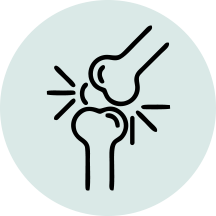Are you looking for a natural way to soothe your body's aches and pains without relying on prescription medications or over-the-counter remedies? Look no further than the healing powers of essential oils! These naturally occurring plant extracts have been used for centuries to promote relaxation, harmony, and balance in the mind and body.
Whether you're dealing with muscle soreness after an intense workout or chronic pain from a medical condition, essential oils offer countless benefits for soothing inflammation, reducing tension, and promoting overall wellness. In this blog post, we'll explore some of the top essential oils for easing physical discomforts - so sit back, relax, and let nature do its work!
What are Essential Oils?
Essential oils are natural plant extracts that have been used for centuries to promote health and well-being. These powerful oils can be used to soothe aches and pains, improve mood and sleep quality, boost energy levels, and promote overall health and wellness.
There are a variety of ways to use essential oils, including diffusing them into the air, applying them topically, or adding them to a bath or massage oil. Essential oils are typically safe for most people when used as directed. However, it’s important to keep in mind that these potent plant compounds can interact with some medications, so be sure to consult with a healthcare professional before using essential oils if you have any concerns.
If you’re looking for a natural way to ease pain or improve your overall health and well-being, essential oils may be worth trying. With so many different options available, there’s sure to be an oil (or combination of oils) that can help you achieve your goals.
Benefits of essential oils
There are a number of benefits that can be gained from using essential oils, especially when it comes to soothing aches and pains. One of the main reasons why these oils are so effective is because they help to improve blood circulation. This, in turn, reduces inflammation and pain.
Another benefit of using essential oils is that they can help to calm the nervous system. This is particularly beneficial for those who suffer from conditions such as anxiety or depression. By using these oils, it is possible to reduce the symptoms of these conditions and improve overall mood.
Essential oils can also help to boost immunity. This is important for those who are susceptible to picking up infections or illnesses. By using these oils on a regular basis, it is possible to build up resistance to these problems and stay healthy in the long-term.
How to use essential oils for pain, aches and cramps
There are many ways to use essential oils for pain, aches and cramps. The most common way is to dilute the oil in a carrier oil and massage it into the affected area. This can be done with just a few drops of oil, or up to 20 drops depending on the size of the area and the severity of the pain.
Another way to use essential oils for pain is to add them to a warm bath. This is especially relaxing and helpful for muscle aches and pains. Simply add 5-10 drops of your chosen oil (or a combination of oils) to your bathtub filled with warm water. Soak in the tub for 20-30 minutes for best results.
You can also create a compress by soaking a clean cloth in cold water, adding 1-2 drops of essential oil, and then applying it to the painful area for 10-15 minutes at a time. This is especially helpful for alleviating pain from headaches, arthritis, and menstrual cramps.
You can also diffuse essential oils into the air using a diffuser. This can help to ease pain throughout your entire body as well as improve your mood by increasing relaxation. Simply add 5-10 drops of oil to your diffuser with water following the manufacturer's instructions. Then turn it on and let it run for 30 minutes or longer as needed
Commonly used essential oils for pain relief
Many people find relief from pain using essential oils. These oils can be used in a variety of ways such as aromatherapy, massages or added to lotions. They provide natural solutions for those looking for alternatives to medications.
Lavender oil: This oil has a reputation for instilling a sense of tranquility and providing pain relief. It can be used to ease muscle tension, combat migraines and alleviate headaches.
Peppermint oil: This oil is cooling and refreshing, making it perfect for use on sore muscles or joints. It helps with headaches too!
Rosemary oil: This oil has warming and stimulating properties which make it beneficial for relieving stiffness and pain in muscles and joints.
Chamomile oil: This oil is soothing and calming, making it ideal for use on tense muscles or areas of inflammation.
Recipes for mixtures to combat pain and other conditions
There are a number of essential oil recipes that can be used to combat pain and other conditions. Some of these include:
- A mixture of Lavender, Clary Sage, and Peppermint oils to help soothe headaches and tension.
- A mix of Rosemary, Ginger, and Thyme oils to help relieve muscle pain.
- A blend of Lemon, Cypress, and Marjoram oils to help reduce inflammation.
- A combination of Lavender, Chamomile, and Rosewood oils to help promote relaxation.
Precautions when using essential oils
When using essential oils, be sure to take the following precautions:
- Always dilute it with a carrier oil such as jojoba or coconut oil.
- Essential oils should not be applied to any open lesions or skin that is damaged.
- If you have sensitive skin, do a patch test on a small area of skin before using an essential oil.
- It's important to remember that essential oils should not come into contact with the eyes or mucous membranes. If, however, this does happen, rinse the affected area with water for 15 minutes.
- Do not ingest essential oils unless they are specifically labeled as safe for internal use and under the supervision of a qualified healthcare provider.
Alternatives to essential oils for pain relief
There are a variety of alternatives to essential oils for pain relief. These include:
Eucalyptus oil: This oil has anti-inflammatory and analgesic properties that make it effective for relieving pain.
Peppermint oil: This oil is known for its cooling sensation and can be helpful in reducing inflammation and pain.
Lavender oil: This oil is known for its calming properties and can be helpful in reducing pain and inflammation.
Rosemary oil: This oil has both anti-inflammatory and analgesic properties, making it an effective pain reliever.
Conclusion
Essential oils can be great tools for naturally managing aches and pains. By understanding the different types of essential oils and how they work to provide relief, you can feel more confident in your use of them. With the right attitude and knowledge, we’re sure that you will find a plethora of benefits when it comes to using essential oils to soothe your aches and pains! So why not give it a try today?

















